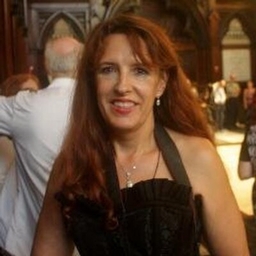
Anne Helmenstine
Science Writer and Blogger at Dotdash Meredith
@dotdashco #Chemistry and #Science writer https://t.co/1rAKCdAprf owner, scientist, mom, writer, gardener, musician, pyro.
Articles
-
3 weeks ago |
buff.ly | Anne Helmenstine
A laboratory safety agreement, also called a laboratory safety contract, is a document students and parents sign to confirm their understanding of essential lab safety rules and their commitment to following them. These contracts are a standard part of science classrooms and laboratories across middle schools, high schools, and colleges. They establish expectations, reinforce accountability, and promote a culture of safe, responsible lab work.
-
3 weeks ago |
sciencenotes.org | Anne Helmenstine
The photoelectric effect is the phenomenon in which the surface of a material—typically a metal—ejects electrons when it absorbs electromagnetic radiation, usually in the form of ultraviolet or visible light. This effect provides key evidence that light behaves not only as a wave but also as a particle, with energy delivered in discrete packets called photons. The photoelectric effect played a foundational role in the development of quantum mechanics and helped confirm that energy is quantized.
-
3 weeks ago |
sciencenotes.org | Anne Helmenstine
Fireworks are a spectacular demonstration of how chemistry and physics come together to create art in the sky. Understanding how fireworks work reveals the science behind the colors, shapes, and sounds that captivate audiences during celebrations. Each explosion results from precise chemical reactions and careful engineering that turn raw ingredients into choreographed light shows. Chemical reactions power fireworks, typically involving oxidation and combustion.
-
4 weeks ago |
sciencenotes.org | Anne Helmenstine
The ear is a complex sensory organ responsible for detecting sound and maintaining balance. Found in humans and many other vertebrates, the ear includes structures both visible externally and hidden deep within the skull. These structures collect sound, convert it into electrical signals, and help regulate spatial orientation.
-
1 month ago |
sciencenotes.org | Anne Helmenstine
This algebra study sheet summarizes the most important algebra rules, identities, and common mistakes in one convenient reference. Whether you’re solving equations, graphing functions, or simplifying expressions, this printable algebra cheat sheet is a handy resource for students and educators alike. Download the Printable PDFThis sheet is designed for easy printing and classroom use.
Try JournoFinder For Free
Search and contact over 1M+ journalist profiles, browse 100M+ articles, and unlock powerful PR tools.
Start Your 7-Day Free Trial →X (formerly Twitter)
- Followers
- 3K
- Tweets
- 27K
- DMs Open
- No

Krebs Cycle or Citric Acid Cycle https://t.co/hOf0jEdMeh https://t.co/JZ45bIxrTd

Parts of the Heart - Human Heart Anatomy and Worksheets https://t.co/kxeIETOmic https://t.co/yckI8Ciow7

Egg in a Bottle Experiment - Two Easy Methods https://t.co/VJzBBEEwJq https://t.co/OGhXpbcA2N